11 Tips for Longer Lasting Hibiscus Blooms
Are you looking to get longer lasting blooms from your Hibiscus this season? Hibiscus blooms can last a while, but there are some tricks to getting their blooms to stick around. In this article, gardening expert Melissa Strauss shares her top tips for ensuring you get the most out of your hibiscus this season.

Contents
There are few shrubs that can boast flowers to compete with the hibiscus. In fact, it is a species of hibiscus, the giant-flowered rose mallow, that gets to claim the largest flowers of any hardy perennial.
The 12” blooms produced by these plants live up to their dinner-plate-sized reputation. The many varieties of hibiscus produce copious amounts of large and colorful flowers, with long blooming seasons that can sometimes last for several months.
Hibiscuses like a healthy dose of fertilizer, as well as plenty of sun and water. But what are some other tricks of the trade to get those blooms booming? Let’s talk about some hibiscus blooming tips to maximize your plant’s blooming potential.
Pick the Right Location

If your hibiscus is strictly an outdoor plant, the first hibiscus blooming tip is to pay attention to the drainage when choosing a location. Hibiscus is actually pretty good at adapting to different surroundings, but we are talking about thriving here, not just surviving. The healthier the plant, the more flowers it will produce, and the longer it will sustain them.
Hibiscus will be happiest in soil that is well-draining but will hold a consistent amount of moisture with regular watering.
Tropical varieties will tolerate heat and drought best, naturally, and there are a small number of species that like wet feet. For the most part, well-drained but moist soil is the optimal environment.
Maintain Proper Soil pH
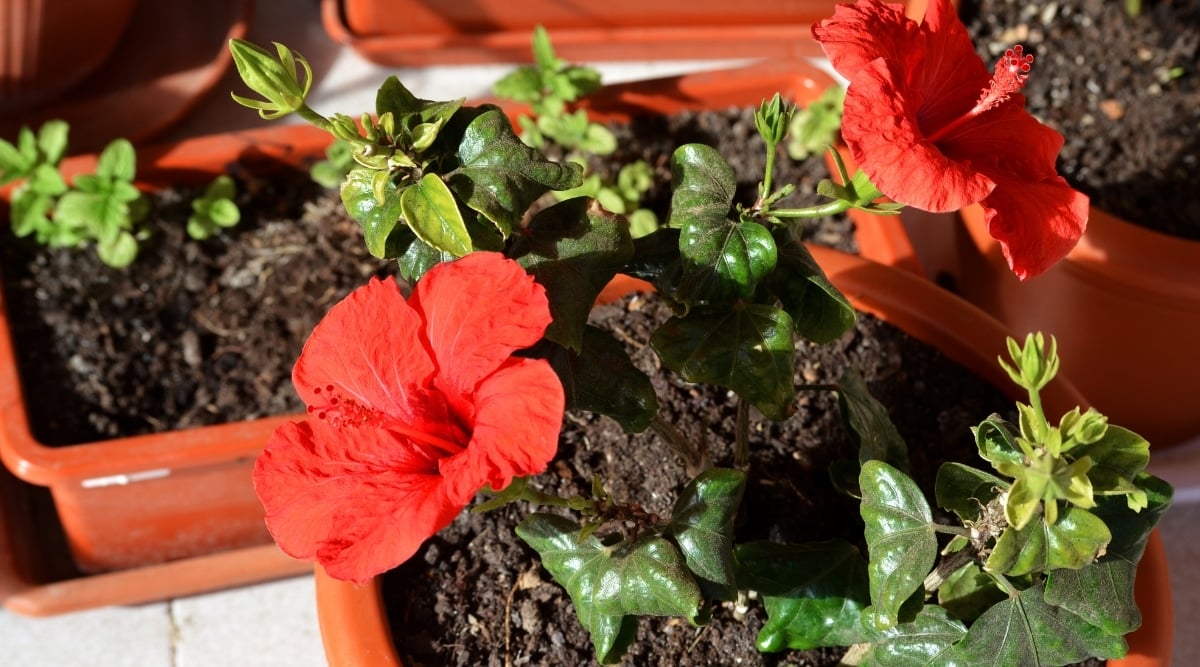
Hibiscuses like soil that is slightly acidic. Their ideal range is between 6.5-6.8, which is not quite at the level an azalea or a camellia would need. Acidity in the soil is good for most plants because it causes the nutrients, they need from the soil to break down in a way that is most available for their use.
Iron, in particular, is important for hibiscus plants to be in good health. Iron plays an important role in the production of chlorophyll. Chlorophyll is pretty darn important to the vitality of a plant, and a healthy plant will produce more, and more robust blooms.
Provide Plenty of Sun

As much as with soil type, hibiscus are tolerant of varying amounts of sunlight. Hibiscus shrubs will technically grow and produce some flowers in partial shade. However, they will produce far more blooms if they are planted in full sun. For some species, that number should be closer to 8+ hours daily.
Full sun is typically described as 6 or more hours of direct sun exposure daily. Not all sun is equal in terms of hibiscus health. The ideal time for that full sun is as early in the day as possible. The morning sun does the same job assisting with photosynthesis, but it is much less harsh than the afternoon sun which can be dehydrating.
If you decide to follow this hibiscus blooming tip and place your hibiscus in a spot that has more intense, afternoon light, just pay attention to the plant’s hydration level and give it some extra water if it starts looking wilted.
Provide Enough Water

Hibiscus plants are water lovers. In fact, providing that the soil is draining properly, it would be difficult to overwater. This is particularly true during the summer when the weather is hot, and the flowers are drinking lots of water.
If your hibiscus is in a container and outdoors, you can go ahead and water it every day. As long as there are sufficient drainage holes in the pot, you should accomplish the goal of consistently moist, but not wet, soil.
For hibiscuses in the ground, there is the question of climate and rainfall. The ultimate goal, though, is the same. Whether by rainfall or by irrigation, keep the soil moist, but don’t flood the plant.
There are a handful of hibiscus varieties that naturally grow in boggy, swampy climates. These are exceptions, as they prefer to be planted in places with poor drainage.
This actually makes them a great plant for anyone who has a spot with less-than-ideal drainage that needs some sprucing up. H. coccineus and H. mutabilis are both species that flourish in boggy areas.
Don’t Overwater

Apart from that handful of varieties that enjoy boggy soil, most hibiscuses don’t tolerate a soggy type of environment. If the soil is too saturated, the nutrients are diluted, and the plant will not absorb what it needs.
Signs of an overwatered hibiscus plant are yellowing of leaves and a plant that appears to be wilting, despite the soil being wet. If you have overwatered a hibiscus in a container, the best hibiscus blooming tip is to repot the plant in fresh soil. Ensure your hibiscus is not sitting in soil that is compromised by fungus.
Mulch to Keep in Moisture
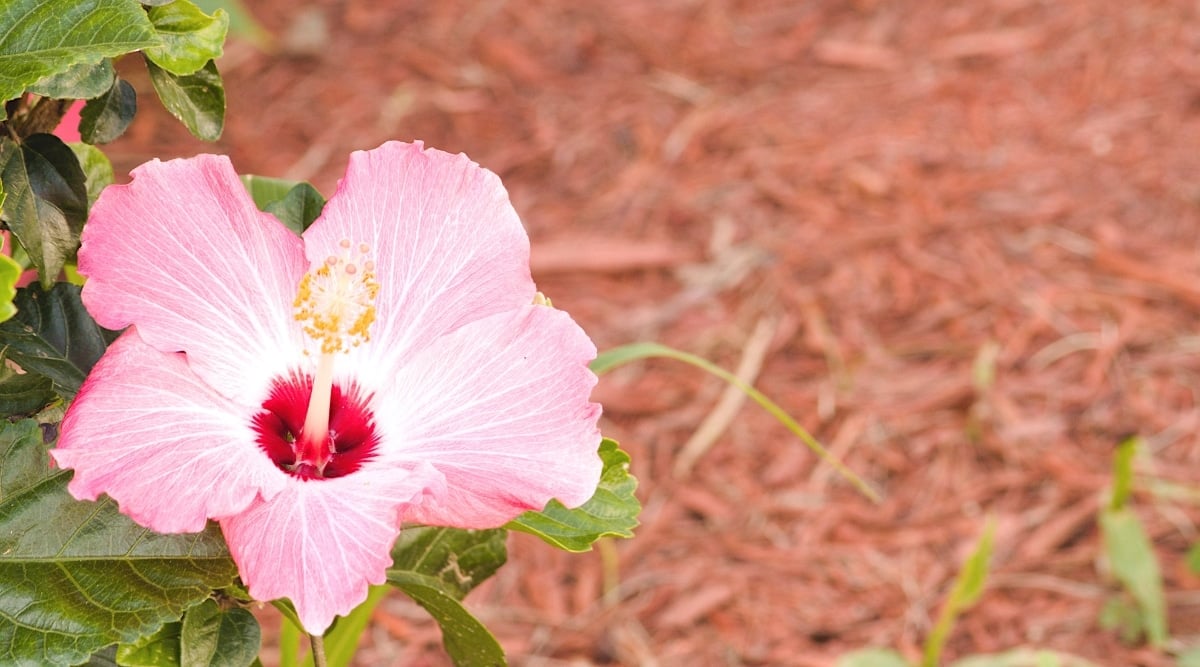
Whether growing indoors or in an outdoor flower bed, mulching hibiscus plants encourages longer hibiscus blooms. This hibiscus blooming tip is important to hinder the loss of moisture in the soil. About 1 inch of mulch is good for a hibiscus that is planted indoors. When planted outdoors, about 3 inches should be enough.
Mulch comes in many different materials, such as shredded tree bark or wood chips, straw, grass clippings, and straw. All of these organic materials have other benefits apart from retaining moisture. This includes enriching the soil, encouraging beneficial organisms such as worms, cooling the plant’s roots, and preventing weeds.
Prune Regularly

Hibiscus plants bloom on new wood, so pruning the right way, at the right time will help to maximize your plant’s flower production. Light pruning to remove any damaged branches is fine at the end of the fall. Once the winter comes around though, it is best to leave a hibiscus alone.
Spring is when regular hibiscus pruning should take place. This is particularly important if you plan on doing any major cutting back. The main objective should be to give the plant as much time to recover and form buds before the blooming season, as possible.
Always use clean and sharp tools when pruning any plant. This ensures that you will make clean cuts, and clean cuts heal more quickly. Because of their fast growth rate, you can prune hibiscus branches back by 1/3 to ½.
Use this time to shape the plant, cut any crossing branches, and thin out the interior to maintain the proper air circulation in the interior of the plant.
Fertilize When Needed
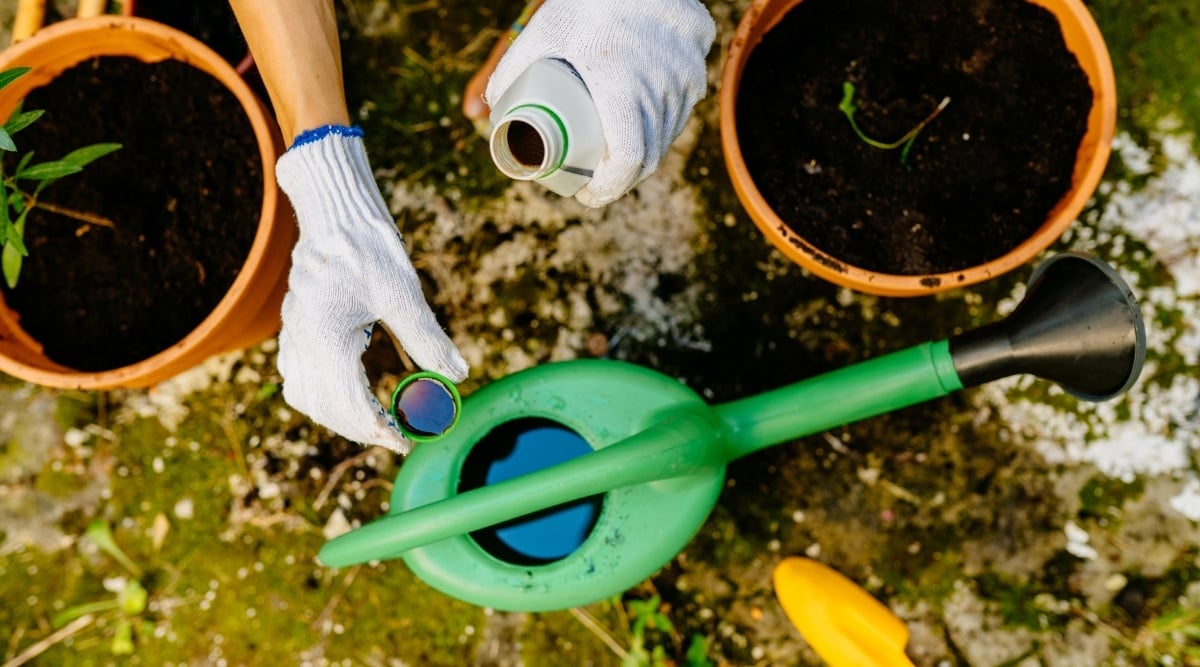
Hibiscuses will still bloom if you don’t fertilize, but they will not produce nearly the same quantity of blooms, and the blooms will be stronger if you do fertilize.
This is especially true of container plants. Hibiscuses need a fertilizer with a high phosphorus content. That means your fertilizer should have a high middle number. The phosphorus is specifically important for stronger bloom production.
Hibiscuses also benefit from some additional Iron. If your plant is in the ground, it should get enough iron from the soil, provided that the pH of the soil is right.
For container plants supplementing is a great idea. Fertilize monthly to twice monthly from spring until the end of the blooming season. Fertilizing during the winter is not necessary unless the plant appears to have a nutrient deficiency.
Deadhead Spent Blooms
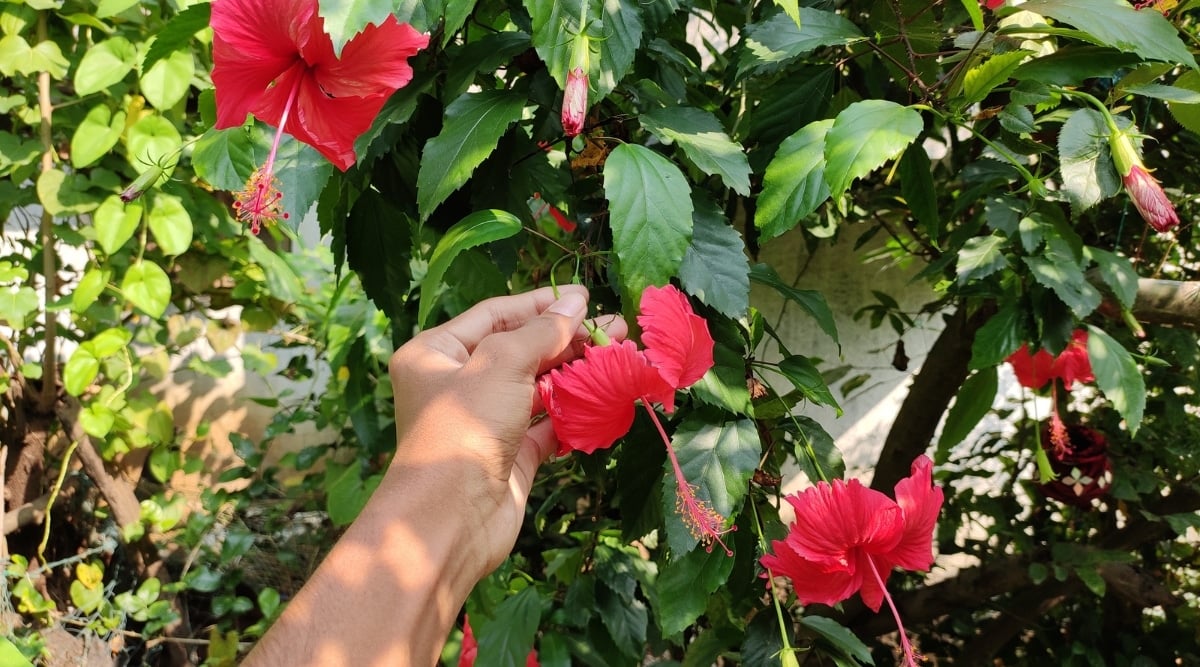
Possibly one of the most effective hibiscus blooming tips is deadheading. If you’re not familiar with the term, deadheading is the practice of removing spent blooms from a plant. This can be done with hand shears, or by simply snapping the spent flowers off by hand.
Hibiscuses love to be deadheaded. Most species’ flowers only bloom for one day, but large clusters of bud form at the ends of branches and open one or two at a time for continuous blooming throughout the summer.
Plucking off the spent blooms makes room, redirects nutrients, and increases the light exposure on the remaining buds. So, deadhead that hibiscus regularly. It will reward you with a continuous supply of those gorgeous flowers, throughout the summertime and often, into the fall.
Repot When Necessary
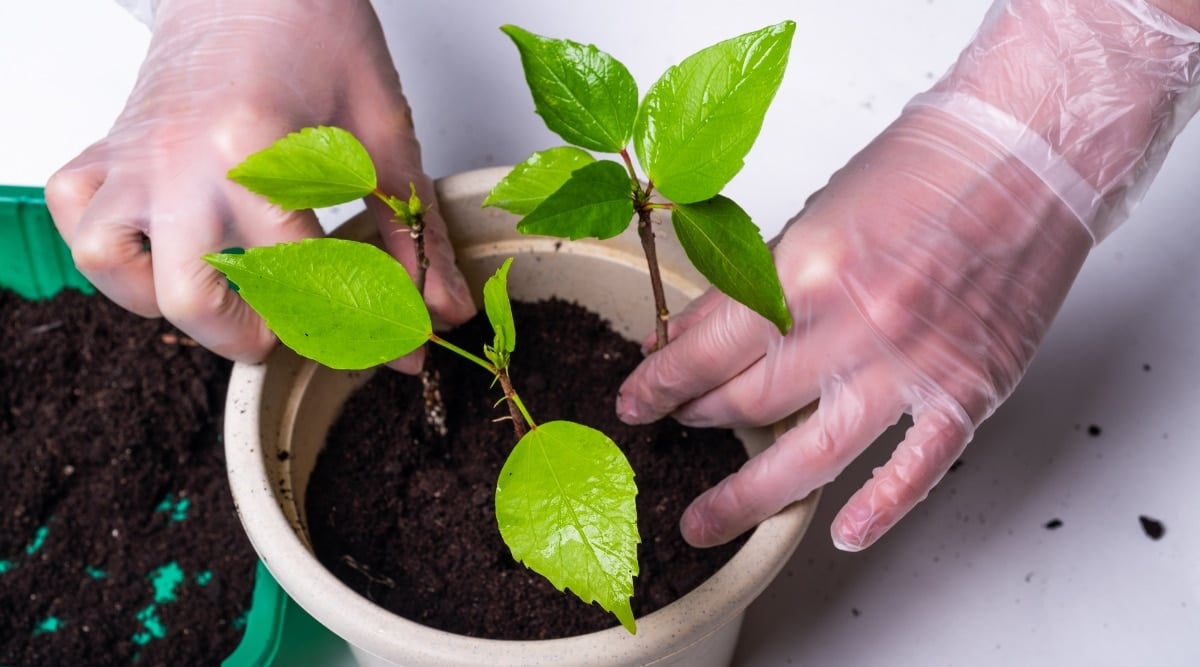
Hibiscuses like to be slightly root-bound. Specifically, they will bloom better when they are just a little bit snug in the pot. Just be careful not to take it too far. A pot that is too undersized will leave you with a malnourished plant and that will have the opposite effect.
If your hibiscus is a container plant, you should repot every 1-2 years, and choose a pot that is only slightly larger than the root ball.
Hibiscuses will let you know when they poke roots through their drainage hole. Which speaks to another important factor. Make sure your hibiscus has a container with proper drainage. Most varieties like soil that is consistently moist, but not soggy.
Check for Pests and Diseases
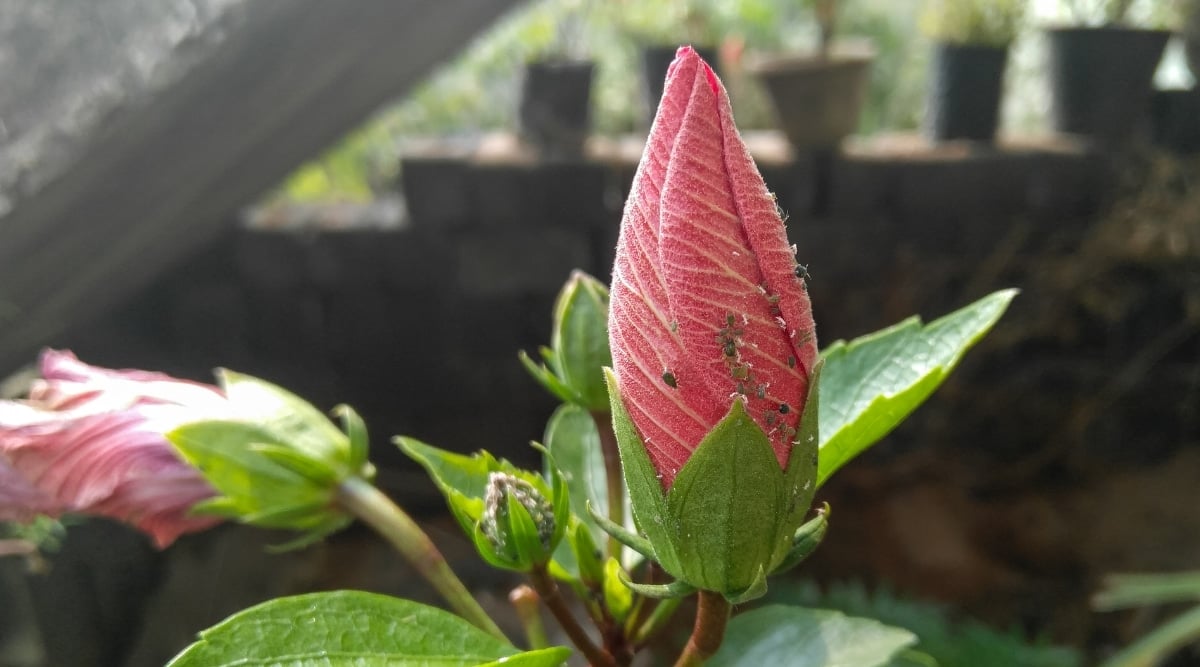
It is possible that your hibiscus plant may experience pests or diseases during its lifetime. It is important to regularly check on the health of your plant, as early detection can save it from harmful or even fatal infections. Signs to look for include holes in the leaves or flowers, powdery substance, black or yellow spots on leaves, and wilting.
Aphids, mealybugs, scale, fuller rose beetles, and whiteflies are common pests of hibiscus. Typically a spray with the hose can remove these pesky critters. However, if not caught early enough, the infection may be more severe.
Removing infected leaves and even branches may be required. Natural repellents, such as neem oil, can keep pests at bay, prolonging the bloom time of your beautiful hibiscus.
Powdery mildew, blight, leaf spots, root or crown rots, and hibiscus chlorotic ringspot virus are a few diseases that can infect hibiscus plants. Proper watering techniques are vital to keeping fungal diseases from creeping in. If a disease is suspected, immediate action should be taken.









